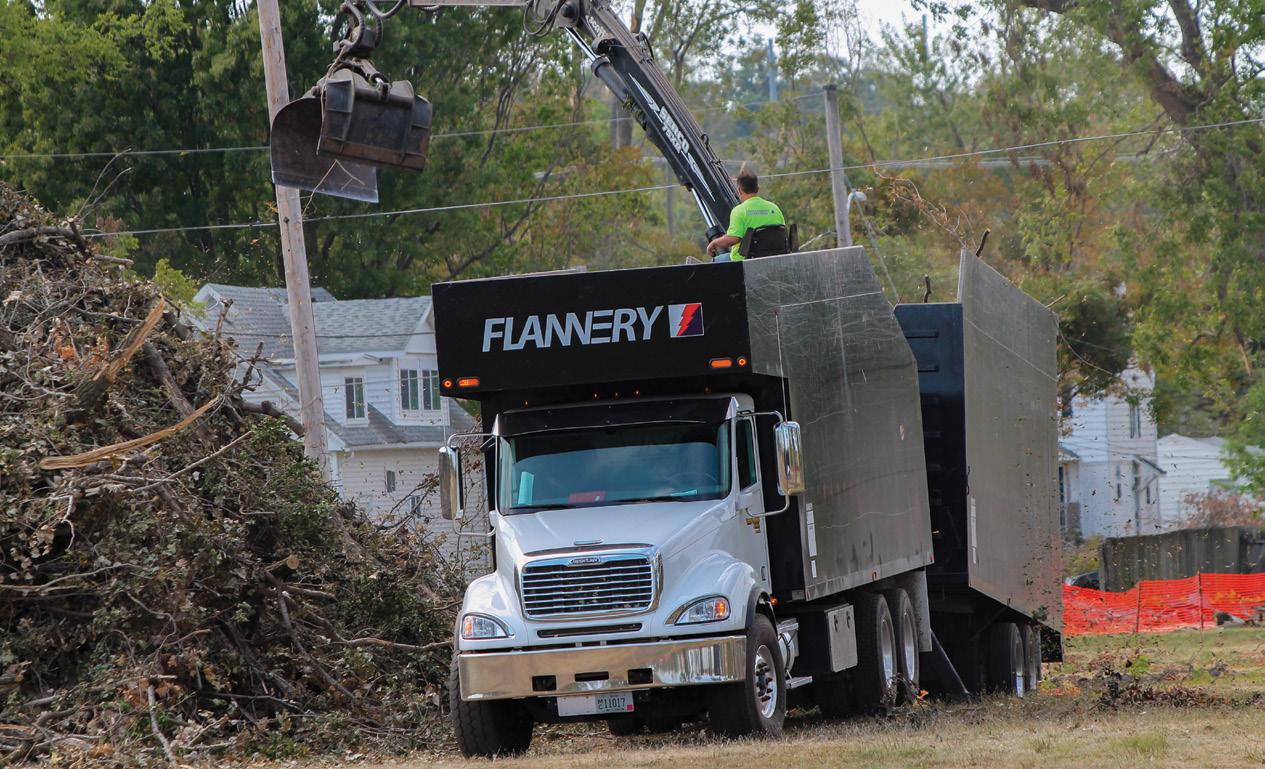
2 minute read
Tackling Recovery
Cedar Rapids has dealt with devastating floods, tornadoes, ice storms — but never before August — hurricanes! The cleanup process following the derecho has been nothing short of unprecedented. Below is a brief summary of the massive coordination efforts that have been underway since August 10, 2020.
Immediate Response
In the hours and days following the storm, efforts focused on life-safety issues such as pushing debris off roads, inspecting and assessing housing damage, addressing a massive loss of roadway signage, and re-energizing or replacing more than 100 traffic signals. This involved multiple agencies, jurisdictions, and contractors.

The Iowa National Guard deployed on August 13 to clear critical infrastructure using equipment and vehicles that could navigate utility easements and other tight locations where electric crews needed immediate access. Also playing a valuable role in clearing roads and hauling debris, were the Iowa Department of Transportation and multiple private contractors that were quickly secured through an emergency bid process. Multiple jurisdictions helped Cedar Rapids crews replace or repair hundreds of roadway signs and traffic signals, and City crews worked seven days a week, dawn to dusk, to clear debris off roadways, using the same prioritization as snow emergencies.
Long-Term Recovery
As cleanup efforts shifted from immediate response to long-term recovery, the City contracted with an experienced company that specializes in large debris cleanup and hauling, using trucks that can each carry the equivalent of five City trucks. Professional debris monitoring firms were also secured to help ensure every ton of debris would be properly documented and eligible for FEMA reimbursement. Multiple haul sites were quickly established to cut down on drive time and to allow crews close access to neighborhoods.

Cedar Rapids committed early to removing all curbside debris for property owners, and completed initial tree debris removal from the public rightof-way by late October, which focused on grabbing bulk piles within easy reach of the truck’s crane. Additional passes are focusing on using smaller trucks to clear narrow streets such as cul-de-sacs and dead ends, addressing hazardous intersections, returning to high volume debris areas to pick up additional material, and responding to missed piles.
Hazardous limb removal efforts continue for street trees and private limbs that are hanging in the public right-of-way. Removal of hazardous street trees started in late October. The crews are moving quickly through the entire city to take down as many dangerous, broken limbs as possible before winter.

Collection of non-tree debris storm damage got underway in August, starting in areas where tree debris pickup had already begun. The collection of storm debris is ramping up as additional tree debris is removed. A full list of items eligible for pickup is available on the City’s website.
Every neighborhood is different and has varying volumes of debris remaining. There is not a set number of passes. Crews will continue collecting tree debris until we determine a reasonable cut-off date is in sight, based on the remaining material. Check the City’s website, www.cedar-rapids.org, for the most up-to-date information.






